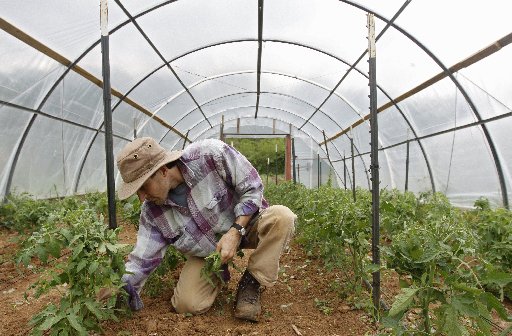Seven tips for backyard vegetable gardens
Saturday, April 16, 2011
Andrea Jaeger first started gardening as a child, planting vegetables with her parents back home in Ohio. Now, Jaeger, a transplanted Chattanooga resident, has her own small vegetable garden, mostly featuring greens and okra.
"I just kind of tore [the ground] up and put it in," she said of her backyard. If she had her druthers, she would plant a lot more.
Fortunately, Jaeger has the opportunity to do more planting as an intern at Crabtree Farms. This weekend, Crabtree is having a plant sale for people who, like Jaeger, want to spend time gardening at home.
There are many benefits of growing at home, said farm manager Joel Houser.
"It's certainly cheaper to grow at home than to buy it, and it's also better food, with higher nutrient content. And it's a good family interaction and a good way to get a little outside time and some exercise."
For those who might be intimidated at the notion of growing a garden, Houser said the first time is the hardest.
"There's always something you can do better, but the fact is those plants want to grow," he said. "As long as you give them a little fertilizer, keep them weeded and give them water, they'll grow."
Tips and things to know:
- Check the soil texture. If digging a hole is difficult, he recommends using a raised bed. A raised bed is a small, open structure filled with topsoil.
- Be patient. The time it takes from planting to picking can vary. For example, radishes take about three weeks, cucumbers about six weeks and peppers about three months.
- Grow what's easy. Interested in growing fruit? Think blackberries. "Blackberries are
the easiest. We're a little bit too warm for raspberries. Blackberries are very hardy, and they don't need very specific soil conditions," said Houser.
- Learn what works in what season. When the summer garden starts to fade, it's time to start planting fall crops, such as broccoli and collards.
- Get in some practice. As a test run, consider taking part in a community garden.
- Plant in succession. By spacing out the planting, you can cut back on the potential for pests and disease.
- Be willing to sacrifice some of the plants. Thinning them out allows for better growth. "A master gardener I spoke to said she was a master gardener because she was willing to kill her plants," said Jaeger.

